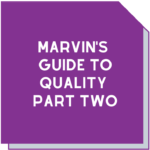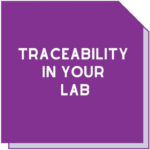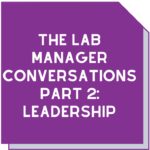The Lab Manager Conversations part six – Equipment
We’ve been speaking to lab managers and leaders about their roles and their challenges. These conversations have been collated into a series of articles that will probably resonate not only with lab leaders, but those across other businesses as well.
While their pathways may have been somewhat different, all our respondents have clocked up well over 10 years of experience prior to their current roles. They also cover the spectrum of calibration, chemical, microbiology, electrical, inspection and environmental laboratories.
And although they were pleased to talk through their issues, by request we’ve changed their names to maintain confidentiality.
This week, we’re looking at some critical resources in labs and the issues facing lab managers in managing those resources.
Equipment
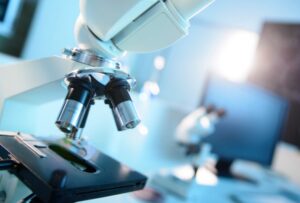 Often a lab manager’s role involves equipment management. Just like a car, equipment needs to be maintained so it’s functioning properly and correctly calibrated. Any perishable supplies or consumables also need to be correct and in date to ensure accurate results. And records of this will be reviewed during an accreditation or certification visit.
Often a lab manager’s role involves equipment management. Just like a car, equipment needs to be maintained so it’s functioning properly and correctly calibrated. Any perishable supplies or consumables also need to be correct and in date to ensure accurate results. And records of this will be reviewed during an accreditation or certification visit.
But no matter what the size of the lab, equipment can be an expensive investment. Obtaining that all important tick of approval for new equipment or standards can be a bit of a process.
When presenting a business case to management, our respondents recommended putting yourself in the shoes of the person approving the expense. Determine what they need to know to get your request over the line.
Demonstrating the value of the equipment is critical at this point. Include a spreadsheet, demonstrating how the equipment will help increase efficiency in the lab and cost savings.
In Lauren’s lab, the system is a little different.
“The life cycle of equipment is already structured and set up through the purchasing section of the company,” she explains. “For example, the trace analysis lab has a lot of expensive equipment and that may need to be replaced every five years. That could take up a big part of the budget in that annual cycle, leaving only a little for other sections of the business. But because the process is so transparent, everyone knows they’ll get a ‘turn’ as part of the budget cycle.”
While the respondents all agreed that owning equipment is preferable, you could raise the possibility of leasing expensive equipment. This way the value could be demonstrated with a lower risk.
Once you have it…
Of course, obtaining the equipment is one thing. Maintaining it is quite another.
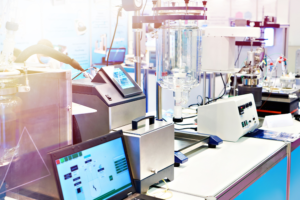 “I’ve had situations where I’ve been out on site and realised that a calibration frequency hasn’t been updated,” says Matthew. “This means that I can’t enter data directly into a spreadsheet on site. So, I have to make a manual record then enter it when I’m back in the lab. As well as leading to errors, this is very frustrating because it defeats the whole point of having the technology to do this on site in the first place!”
“I’ve had situations where I’ve been out on site and realised that a calibration frequency hasn’t been updated,” says Matthew. “This means that I can’t enter data directly into a spreadsheet on site. So, I have to make a manual record then enter it when I’m back in the lab. As well as leading to errors, this is very frustrating because it defeats the whole point of having the technology to do this on site in the first place!”
He’s also relates the example of people using equipment that isn’t appropriate for the work or the calibration is not current.
“Obviously this leads to downtime on test equipment. But it also means that if the equipment is incorrectly calibrated then the results are also incorrect,” he said.
Considering the risk
Risk-based thinking is a focus across ISO standards. Incorporating this into lab systems leads to solutions and opportunities.
“We had a rather significant piece of equipment break down. We knew it would take a while to fix it and we certainly didn’t have a spare sitting around,” explained Chris.
“We’d already considered what we could do if this happened, so we put our solution in place. We contacted our clients and advised that we could use a similar technique on another machine during the repair period. Although the results wouldn’t meet the accreditation standard, they did meet the ISO testing standard. This meant that the results would be sufficient for them to make decisions. We offered to provide redefined results once the machine was repaired but it meant that our clients weren’t at a standstill.”
Chris also advised NATA of the breakdown and the solution that had been implemented. Now that the machine is up and running again, the next step is to make some decisions about whether that solution was a good one.
And of course, by keeping the clients advised, the company demonstrated both excellent customer service and communication skills. For a business seeking to differentiate itself from competitors, this can be a very strong selling point.
Staying safe
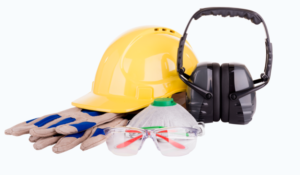 Before WHS and WorkCover requirements introduced mandatory requirements, people like Matthew found themselves in extremely dangerous situations on sites.
Before WHS and WorkCover requirements introduced mandatory requirements, people like Matthew found themselves in extremely dangerous situations on sites.
“I’ve had to walk through areas that I could see were dangerous and climb into high places without harnesses, undertaking testing without even the option of PPE,” he recalls. “Now that there’s the possibility of regulatory bodies investigating a workplace and more awareness by staff of what’s acceptable, there is more of a focus on safety equipment”.
Lauren says that training staff plays a big part in lab safety. “Regular reviews are super important. It’s not just about reviewing their competence; this is also a good time to talk about safety and why they should follow procedures. Plus, it doesn’t hurt to explain that we may have to recall results because they don’t follow those procedures”.
Brian’s staff have just completed a training course on safety and compliance. Since they’ve all been so busy, he wanted them to have a refresher. “It’s only when we’re under pressure to produce results in a hurry that there’s a possibility of someone not following the process,” he explains. “It’s important for them to understand the consequences of that. I got someone to come and do the course here so that everyone got the same message at the same time.”
Not just about physical safety
Covid and other challenges have demonstrated that businesses need to be across more than physical safety.
 While labs know about putting safety systems in place for equipment, more are beginning to address the psychosocial hazards to their staff as well.
While labs know about putting safety systems in place for equipment, more are beginning to address the psychosocial hazards to their staff as well.
Sharon has recently completed a Mental Health First Aid training course. “Management are aware that we need something in place to support our staff,” she explains. “They selected people from across the organisation to do the training and it was incredibly useful. I now have the tools to help my team and anyone else who may be struggling.”
Depending on the size of the business, lab staff may also have access to the company’s Employee Assistance Program (EAP). This is a free, confidential counselling service to support well-being of staff in both their professional and personal lives.
Lauren finds that her regular catch ups with staff are useful for discovering problems. “Those face-to-face meetings mean you get to know them in a different way,” she explains. “You can pick up if they’re unhappy or if there’s something going on. And they’re more likely to trust you enough to express themselves more openly. I know it can be time consuming but those catch ups are valuable.”
Who knew? Caring about your staff’s physical and emotional well-being helps managers to do their job well by uncovering what might be some of the things that hinder staff performance. Staff are our most precious resource in a lab. Good Lab Managers recognise this and do their best to support their staff.
Next week we’ll wrap up our series. Tell us if you’ve liked our Lab Manager Series and if there is any topic you’d like information on in more detail, get in contact with us!
Download the article The Lab Manager Conversations series – part six


